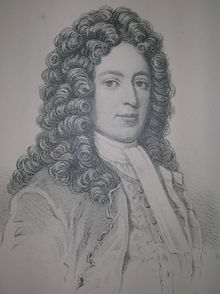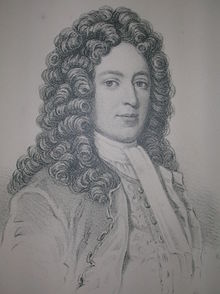He was the eldest son of Alexander, eighth earl of Eglinton, and Lady Elizabeth Crichton, eldest daughter of William, second earl of Dumfries. He was born about 1660. From the time of the death of his grandfather, Hugh, in 1669, he was boarded with Matthew Fleming, the minister of Culross, Perthshire, who superintended his education at the school of Culross until 1673, when he was sent to the university of St. Andrews, where he remained till Lammas 1676. A few months after leaving the university he married Lady Margaret Cochrane, eldest daughter of William Cochrane, Lord Cochrane, the son of the William Cochrane, 1st Earl of Dundonald, on which occasion his father made over to him the Eglinton estates. After the revolution he was chosen a privy councillor by King William, and also a lord of the treasury. In 1700, he obtained a letter from the king to sit and vote in the Scots parliament in place of the lord high treasurer. He succeeded to the earldom on the death of his father in 1701.
On Queen Anne's accession in 1702, Eglinton was chosen a privy councillor, and in 1711 he was named one of the commissioners of the chamberlain's court. In 1710, and again in 1713, he was elected one of the Scottish representative peers. Lockhart, who was his son-in-law, states that when he himself proposed to bring in a bill for resuming the bishops' revenues in Scotland, and applying them to the episcopal clergy there, Eglinton gave his support to the measure, and assured Queen Anne that the presbyterians would not actively oppose it. This is corroborated by Wodrow, who asserts that Lockhart, either in the House of Peers or in the privy council, proposed 'that as we are one in civil we should be one in church matters'. Wodrow also states that his speech on patronage and toleration was 'so very good' that it was supposed 'it was done by somebody for him'. In June 1712, he also proposed a bill for prolonging the time for taking the oath of abjuration till 1 November.
Lockhart affirms that Eglinton at last professed himself a Jacobite, and promised him three thousand guineas 'to help the Pretender in his restoration'. Wodrow also relates that shortly before the rebellion in 1715 Eglinton was at a meeting of the Jacobites where the rebellion, as to the manner of carrying out, was concerted, and heard all their proposals'. Nevertheless, during the crisis he raised and disciplined the Ayrshire fencibles, with which on 22 August he joined the Earls of Kilmarnock and Glasgow and Lord Semple at Irvine in support of the government.
He died suddenly at Eglinton on 18 February 1729.
Between nine hundred and a thousand beggars are stated to have attended his funeral, £50 being divided among them.[
He was the eldest son of Alexander, eighth earl of Eglinton, and Lady Elizabeth Crichton, eldest daughter of William, second earl of Dumfries. He was born about 1660. From the time of the death of his grandfather, Hugh, in 1669, he was boarded with Matthew Fleming, the minister of Culross, Perthshire, who superintended his education at the school of Culross until 1673, when he was sent to the university of St. Andrews, where he remained till Lammas 1676. A few months after leaving the university he married Lady Margaret Cochrane, eldest daughter of William Cochrane, Lord Cochrane, the son of the William Cochrane, 1st Earl of Dundonald, on which occasion his father made over to him the Eglinton estates. After the revolution he was chosen a privy councillor by King William, and also a lord of the treasury. In 1700, he obtained a letter from the king to sit and vote in the Scots parliament in place of the lord high treasurer. He succeeded to the earldom on the death of his father in 1701.
On Queen Anne's accession in 1702, Eglinton was chosen a privy councillor, and in 1711 he was named one of the commissioners of the chamberlain's court. In 1710, and again in 1713, he was elected one of the Scottish representative peers. Lockhart, who was his son-in-law, states that when he himself proposed to bring in a bill for resuming the bishops' revenues in Scotland, and applying them to the episcopal clergy there, Eglinton gave his support to the measure, and assured Queen Anne that the presbyterians would not actively oppose it. This is corroborated by Wodrow, who asserts that Lockhart, either in the House of Peers or in the privy council, proposed 'that as we are one in civil we should be one in church matters'. Wodrow also states that his speech on patronage and toleration was 'so very good' that it was supposed 'it was done by somebody for him'. In June 1712, he also proposed a bill for prolonging the time for taking the oath of abjuration till 1 November.
Lockhart affirms that Eglinton at last professed himself a Jacobite, and promised him three thousand guineas 'to help the Pretender in his restoration'. Wodrow also relates that shortly before the rebellion in 1715 Eglinton was at a meeting of the Jacobites where the rebellion, as to the manner of carrying out, was concerted, and heard all their proposals'. Nevertheless, during the crisis he raised and disciplined the Ayrshire fencibles, with which on 22 August he joined the Earls of Kilmarnock and Glasgow and Lord Semple at Irvine in support of the government.
He died suddenly at Eglinton on 18 February 1729.
Between nine hundred and a thousand beggars are stated to have attended his funeral, £50 being divided among them.[
Gravesite Details
Bio courtesy Wikipedia
Advertisement
Advertisement


